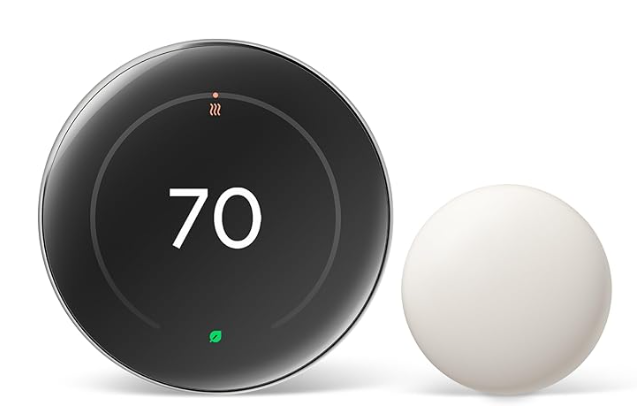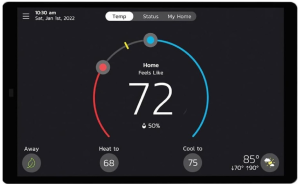Home Automation Creations recommends the Google Nest Gen 4 smart thermostat as it integrates seamlessly into existing home automation setups, and it works extremely well as a stand alone product. (Note: As an Amazon Associate I earn from qualifying purchases.)
The Nest has been among the best selling smart thermostats for the last decade. Google has honed in on exactly what people are want in an automated thermostat. You can typically find it for about $240 on Amazon, where you can compare it to the Gen 3.
If you’re looking for a premium option, the Lennox S40 smart thermostat features a full touch screen panel and the most customization you’ll find in a thermostat.
The thermostat integrates with Alexa and is accessible via the Lennox app. This is the top of the line when it comes to smart thermostats. It retails for about $800 on Amazon, but you might catch it a little cheaper from time to time.
A little more on smart thermostats
Smart thermostats are not just convenient devices for managing home temperatures — they also play a significant role in protecting the environment. By using intelligent technology to optimize heating and cooling, these devices help reduce energy consumption, lower greenhouse gas emissions, and support sustainable living.
One of the key environmental benefits of smart thermostats is their ability to learn and adapt to your schedule. Over time, they analyze patterns in your daily routines and adjust temperatures accordingly, ensuring that energy isn’t wasted when you’re not home. Unlike traditional thermostats, which rely on manual settings, smart thermostats can automatically lower heating or cooling when it’s not needed, drastically cutting down on energy use.
Smart thermostats also use sensors and geofencing technology to detect when people are home. If the house is empty, the system adjusts itself to a more energy-efficient setting. Many models even provide real-time energy usage reports, helping users become more aware of their consumption and encouraging eco-friendly habits.
In addition, smart thermostats often integrate with broader smart home systems and weather forecasts, allowing for even more precise temperature control. For instance, if a cool day is expected, the system might delay air conditioning, relying on natural ventilation instead.
By reducing unnecessary heating and cooling, smart thermostats contribute to lower energy bills and decreased strain on power grids. This not only saves money but also reduces the carbon footprint of each household.
As more homes adopt smart technology, the collective environmental impact becomes significant. With millions of households using smart thermostats, the reduction in fossil fuel consumption and emissions adds up quickly.
In short, smart thermostats are a small change with a big impact — helping individuals save energy while making a positive difference for the planet.


